How does the ENTP personality fit into the Big Five personality traits?
Reading time: 5 minutes

Gregory Park, Ph.D.
Author
What makes ENTPs’ so enthusiastic to discuss, debate, and argue?
In personality studies, scientific researchers often use a trait-based approach to describing the differences between people instead of using personality types. The most well-established method is the Big Five, which describes differences along five broad dimensions:
Because personality types are only a rough guide to an individual’s personality, not every ENTP will have exactly the same underlying personality dimensions. In fact, any two individual ENTPs can be quite different on one or two dimensions, but as a group, ENTPs show some common patterns in their Big Five dimensions.
The graph below shows where ENTPs fall along each of the Big Five dimensions. Each blue dot is an individual ENTP, and darker blue areas means more ENTPs crowd up in that area.
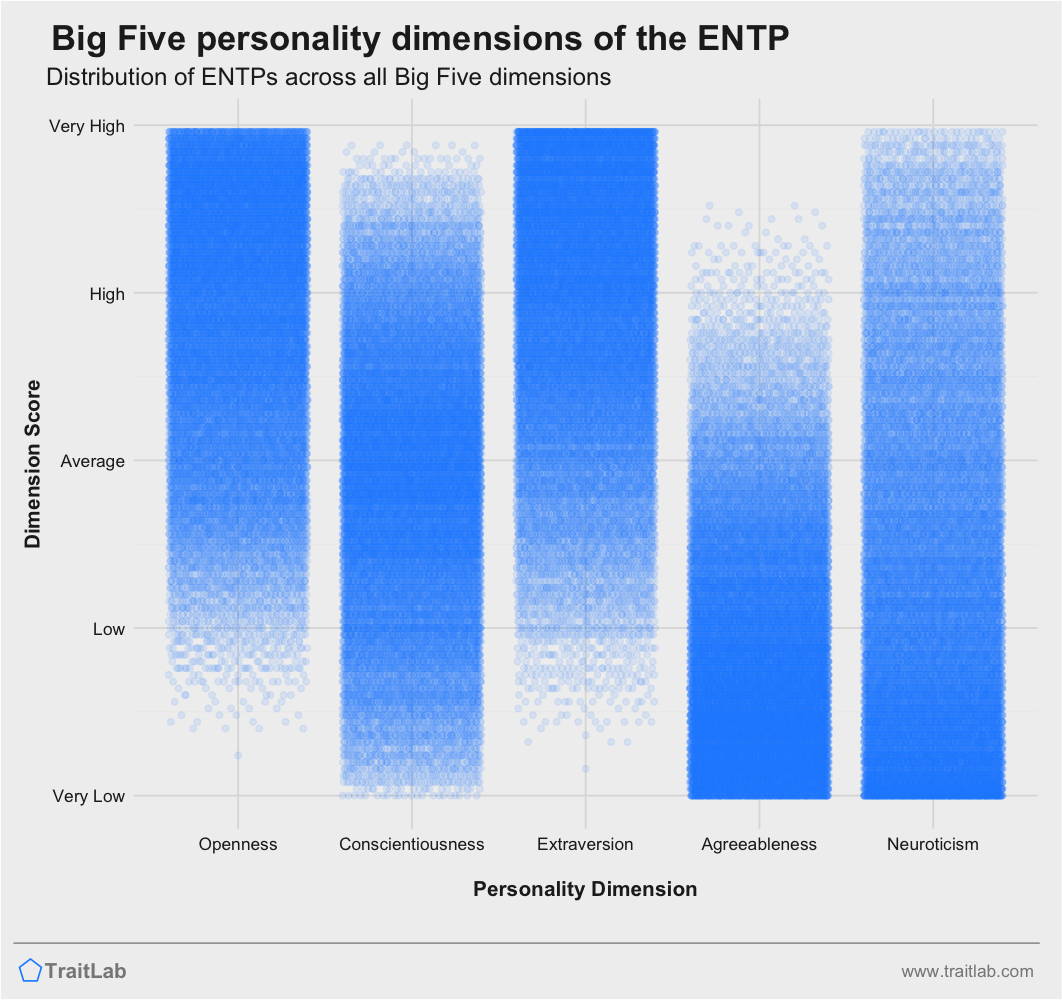
One characteristic that most ENTPs have in common is low Agreeableness — ENTPs are typically not bothered by disagreements, debates, or arguing. This aligns with the pattern on the Agreeableness dimension in the graph above. Notice that most of the ENTPs are crowded at the bottom of the dimension, on the end of low Agreeableness. While there are a few rare ENTPs at the higher end of Agreeableness, most are well below average on the dimension.
By analyzing the general trends of ENTPs along each dimension, we can build a personality profile of ENTPs based on the combination of dimensions they are most likely to have. This also allows us to connect the ENTP to the wealth of research connecting the Big Five dimensions to important life areas, like interests, career preferences, and relationships.
However, personality types are never as accurate as an individual measurement. If you’d like to see exactly where you fall on each of the Big Five dimensions, try the free Big Five test here at TraitLab.
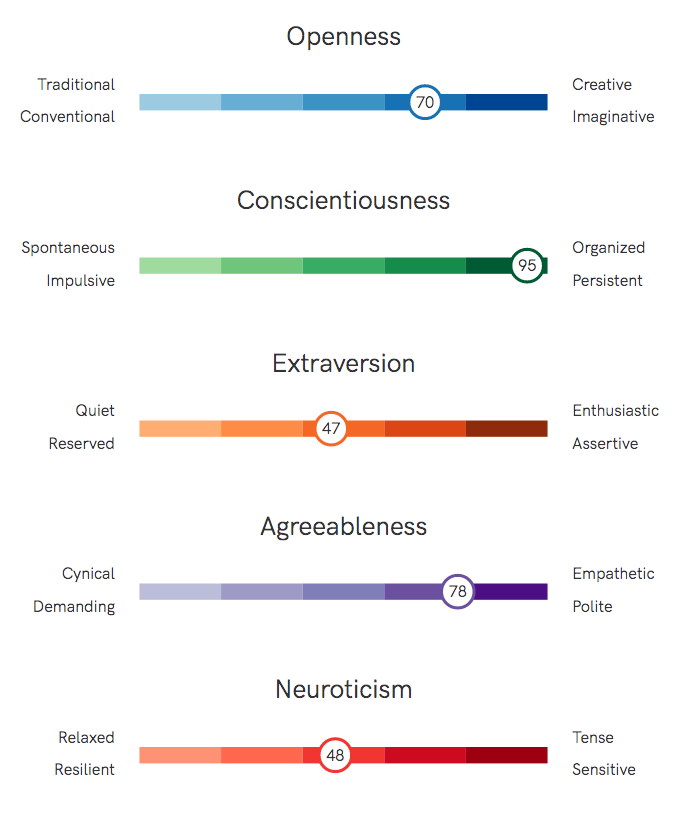
Do you know your Big Five?
Learn about your personality traits and so much more with TraitLab's comprehensive assessment.
Most ENTPs fall well above average on Openness to Experience.
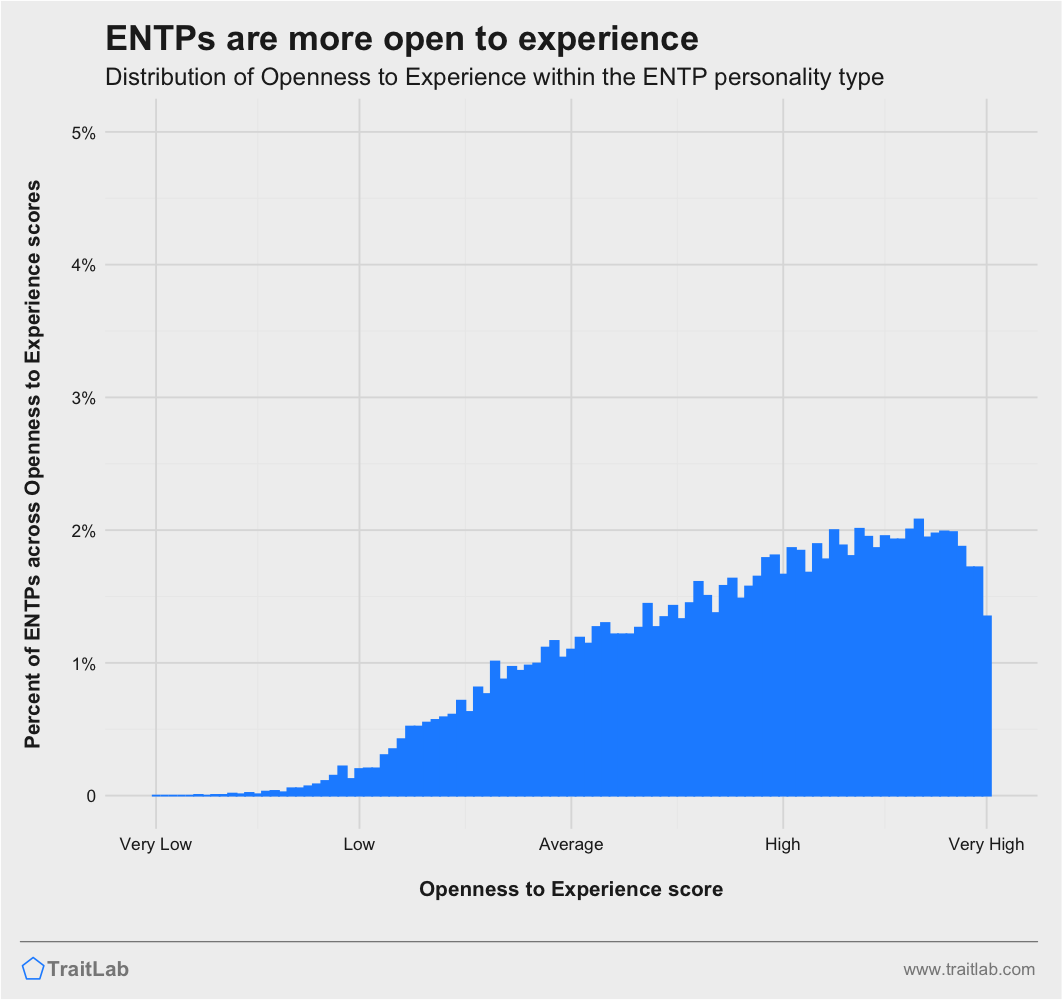
Openness to Experience is related to our tendency to seek new experiences or gravitate back to familiar ones. It also describes our preferences for unconventional, novel ways of thinking and doing over more standard, traditional, and conventional ways.
Highly open people, like many ENTPs, often have a deep love of learning, and can easily become engrossed in new ideas and philosophies. They will be more likely to try new things — from tasting new foods, traveling to new places, or exploring new topics — and over time, they tend to develop a wide ranger of interests and tastes. Lastly, they are more likely to become deeply absorbed in new experiences and can often have an intense emotional responses to art, music, or a good book.
Most ENTPs tend to be near the average on Conscientiousness.
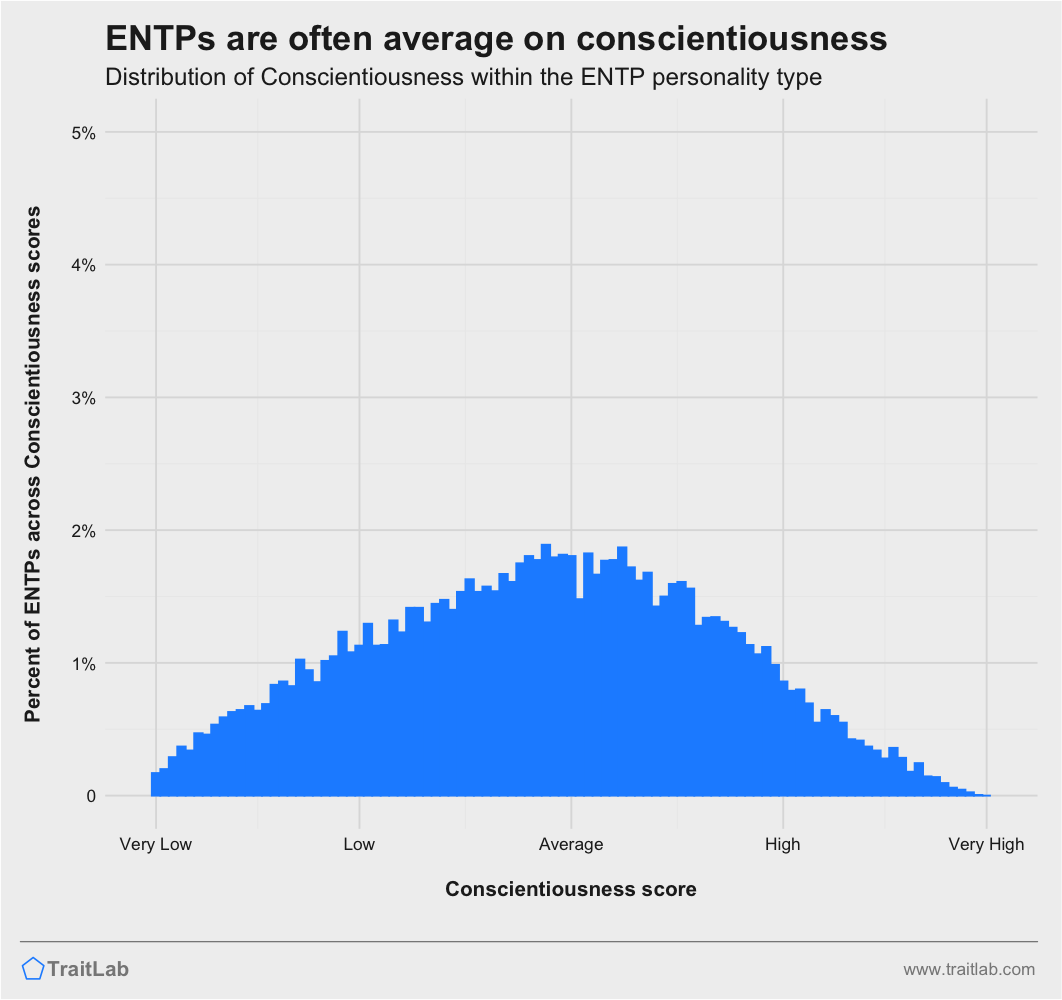
More precisely, ENTPs are normally distributed on Conscientiousness, and they show the classic bell-shaped curve along the whole dimension. This means that most ENTPs fall near the average on Conscientiousness, but a few fall on the higher and lower extremes.
Conscientiousness describes our tendency to make detailed plans, to be systematic and organized, and to be disciplined in sticking to these schedules and plans.
Most ENTPs will not stand out as extremely high or low on Conscientiousness, being neither highly organized nor disorganized compared to most people. More conscientious ENTPs will have a tighter focus on long-term goals (including academic, career, health and fitness goals) and will create and follow routines to accomplish these goals over time.
Less conscientious ENTPs will be more easily distracted by shorter-term goals, and will be more likely to switch back and forth between these rather than maintain focus on long-term goals.
If you are curious about how conscientious you are, try TraitLab’s free personality test to see where you fall on all the Big Five dimensions, including Conscientiousness.
ENTPs are usually more extraverted, but there are some ENTPs below the average on Extraversion.
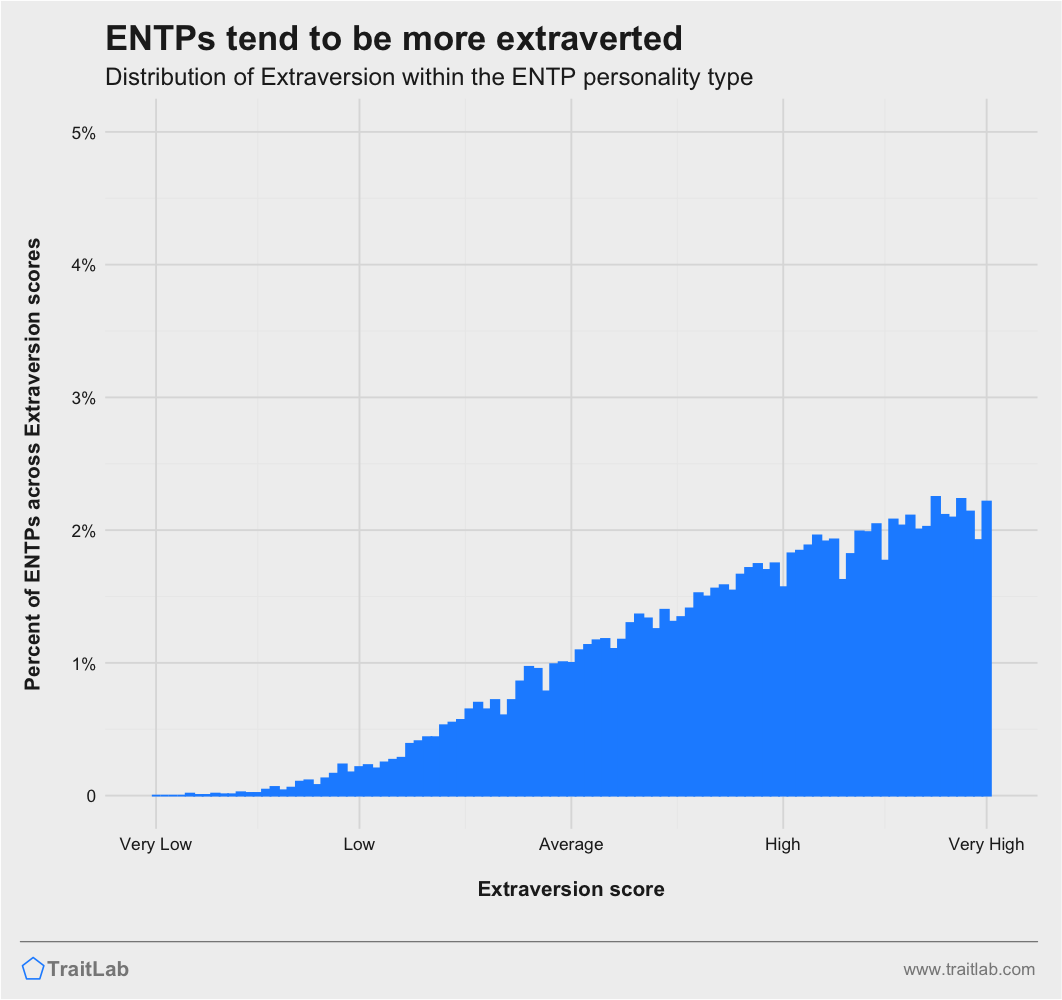
Most ENTPs score highly on Big Five Extraversion, which describes our general activity and energy level, assertiveness, social enthusiasm, and positive emotionality.
Highly extraverted people, like many ENTPs, are usually more energetic and outgoing, seeking excitement and more stimulating environments. They will enthusiastically jump into louder and more crowded environments, and may occasionally get some thrill out of certain types of risk-taking.
Most ENTPs tend to be highly engaged when in social situations, as well. They are comfortable in the spotlight and generally do not mind being the center of attention, and they are more likely to actively assert their own thoughts, opinions, and goals rather than sit back and passively observe the situation.
ENTPs are consistently less agreeable.
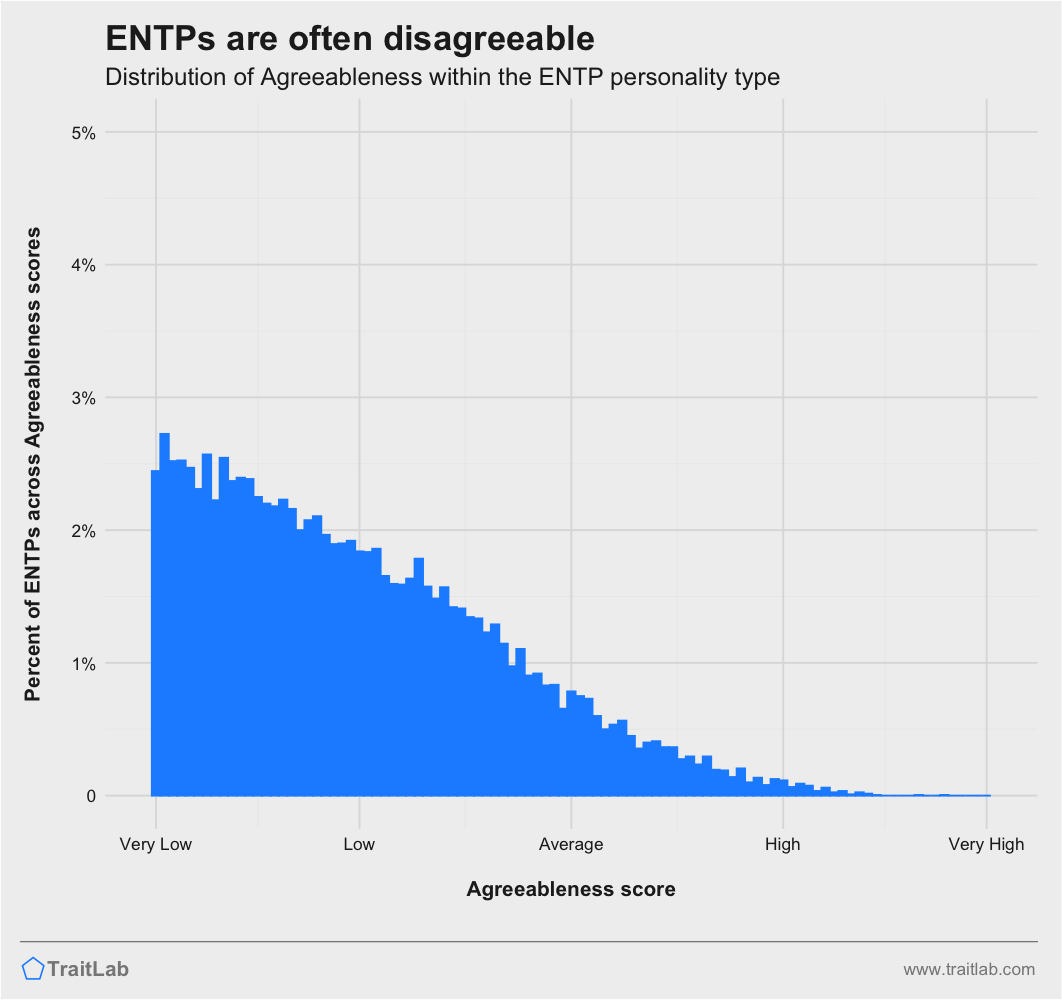
As a group, ENTPs tend to be less agreeable, with many ENTPs falling at the far low end of Agreeableness. Agreeableness describes our tendencies to put our own goals over the needs of others, and our general sense of trust, empathy, and compassion for other people.
Highly disagreeable people, like many ENTPs, tend to be more demanding. They will be more comfortable arguing and create conflict in order to accomplish their goals. Most ENTPs can tolerate plenty of interpersonal tension without being overly worried about keeping things nice and polite.
While individual ENTPs vary widely in their level of Neuroticism, more tend to fall on the lower, more emotionally stable end of the spectrum.
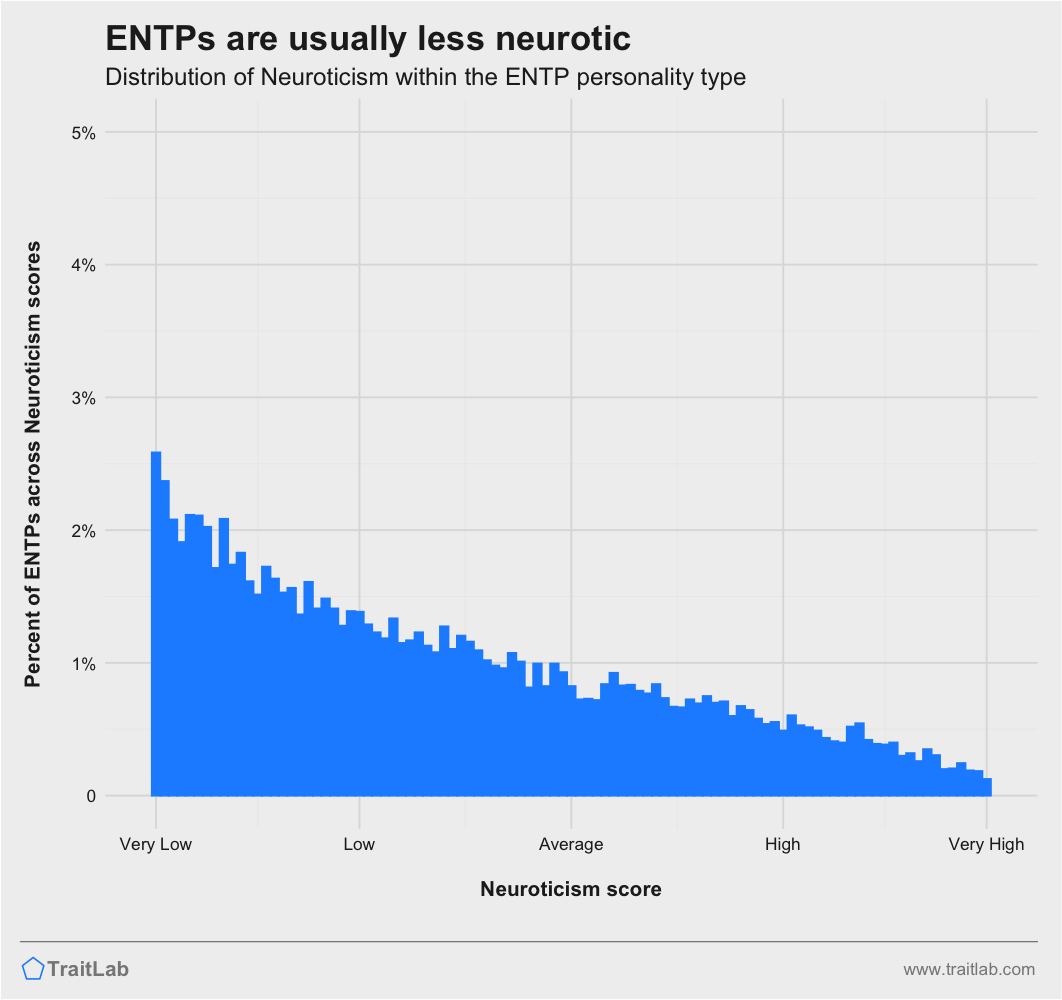
Neuroticism describes our reactivity to stress and our negative emotionality. As most ENTPs are less neurotic, many of them will tend to have more stable moods with relatively few dramatic mood swings. They will tend to worry less than others and be less likely to second guess themselves.
Compared to most people, ENTPs will generally experience fewer and less intense negative emotions, like anger, frustration, and anxiety. They may be unusually calm and composed in stressful situations that might leave others frazzled.